Trees Birds Mammals Fish Amphibians Reptiles
Wild Algarve
Bookshop
Trichoglossum hirsutum (Pers.) Boud. - Hairy Earthtongue
Phylum: Ascomycota - Class: Leotiomycetes - Order: Helotiales - Family: geoglossaceae
Distribution - Taxonomic History - Etymology - Identification - Reference Sources
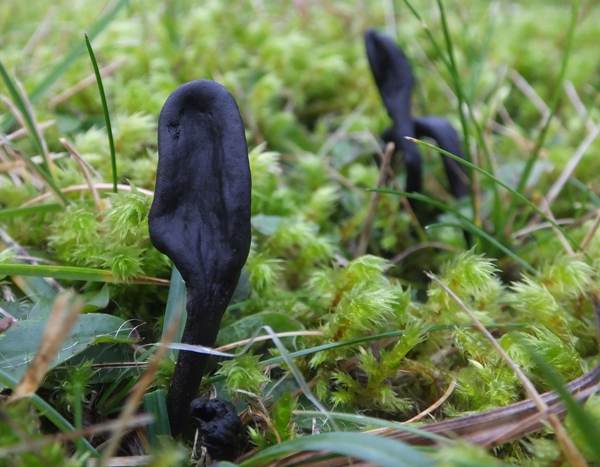
A hand lens is all you need to be able to see the tiny hair-like projections on the spore-bearing surface that separate Tricholossum species from the smooth-surfaced but otherwise very similar Geogolossum earthtongues. Thereafter, identifying most earthtongue species requires microscopic study.
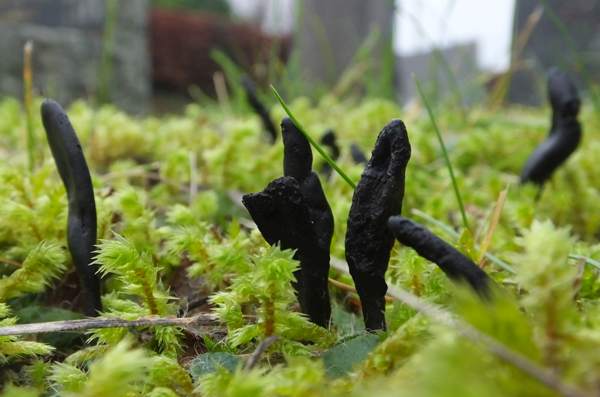
Distribution
The Hairy Earthtongue Trichoglossum hirsutum is widely distributed and an occasional find in Britain (including England, Wales and Scotland) and Ireland; however, because of its small size and cryptic appearance this little club fungus is very easily overlooked. The Hairy Earthtongue occurs also on mainland Europe and is reported to occur in many parts of North America.
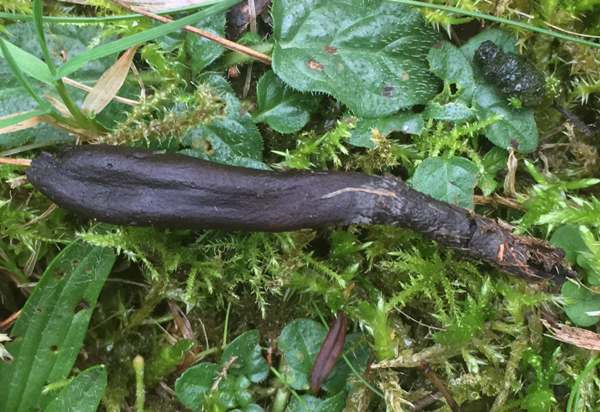
Taxonomic history
This earthtongue species was described in 1794 by Christiaan Hendrik Persoon, who gave it the scientific binomial name Geoglossum hirsutum. It was French mycologist Jean-Louis Émile Boudier who in 1907 transferred this species to the genus Trichoglossum (which Boudier himself had created in 1885), thereby establishing its currently-accepted scientific name as Trichoglossum hirsutum.
Synonyms of Trichoglossum hirsutum include Geoglossum hirsutum Pers.
Trichoglossum hirsutum is the type species of the genus Trichoglossum.
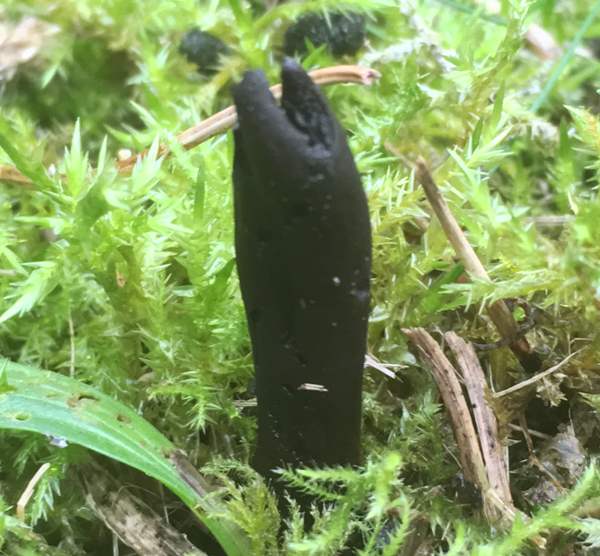
Etymology
The genus name Trichoglossum comes from Tricho- meaning with hairs (a reference to the tiny hair-like spines, known as setae, on the spore-bearing surface) and -glossum meaning tongue. The specific epithet hirsutum also means hairy.
Identification guide
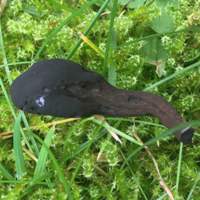 |
Stroma (fruitbody)
Typically 3 to 8cm tall overall, the stromata are black and club-like, comprising a longitudinally indented fertile section typically 2cm long above a more or less cylindrical and velvety infertile stem. |
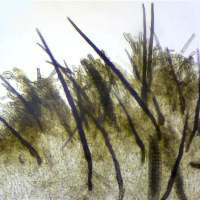 |
Setae
The fertile section is covered in stiff black spines 150-225µm long that extend beyond the tips of the asci.
|
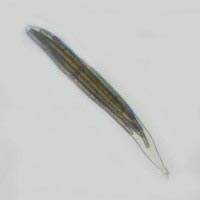 |
Asci
Cylindrical, 180-220 x 20-24µm; 8-spored, with the spores in parallel bunches - not unlike hands of slimline bananas.
|
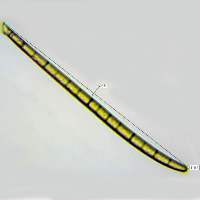 |
Spores
Ascospores elongated cylindrical to fusiform with an acute base and a rounded apex; fairly thick-walled; smooth, 80-195 x 5-7µm; multiseptate (usually 15-septate).
Spore print
Light brown. |
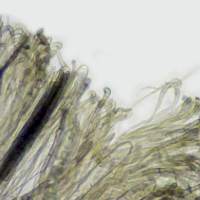 |
Paraphyses
Paraphyses are filiform, 2-3µm in diameter except for the tips and extending slightly beyond the asci; curved or coiled at the apex, which is swollen to 4-6µm in diameter.
|
Odour/taste |
Not distinctive. |
Habitat & Ecological role |
On the ground in unimproved grassland and in mossy dune slacks, often on acidic soil. |
Season |
June to November in Britain and Ireland. |
Similar species |
Geoglossum cookeanum is a similar earthtongue that grows in the same habitats, but it does not have hairs on its fertile surface.
Xylaria polymorpha is an ascomycete of similar size. It grows on dead hardwood and its stromata (compound ascomycetous fruitbodies) are not usually laterally compressed or indented. |
Reference Sources
Fascinated by Fungi, 2nd Edition, Pat O'Reilly 2016, reprinted by Coch-y-bonddu Books in 2022.
Dictionary of the Fungi; Paul M. Kirk, Paul F. Cannon, David W. Minter and J. A. Stalpers; CABI, 2008
Taxonomic history and synonym information on these pages is drawn from many sources but in particular from the British Mycological Society's GB Checklist of Fungi.
Acknowledgements
This page includes pictures kindly contribited by Simon Harding.
Top of page...
Fascinated by Fungi. Back by popular demand, Pat O'Reilly's best-selling 450-page hardback book is available now. The latest second edition was republished with a sparkling new cover design in September 2022 by Coch-y-Bonddu Books. Full details and copies are available from the publisher's online bookshop...